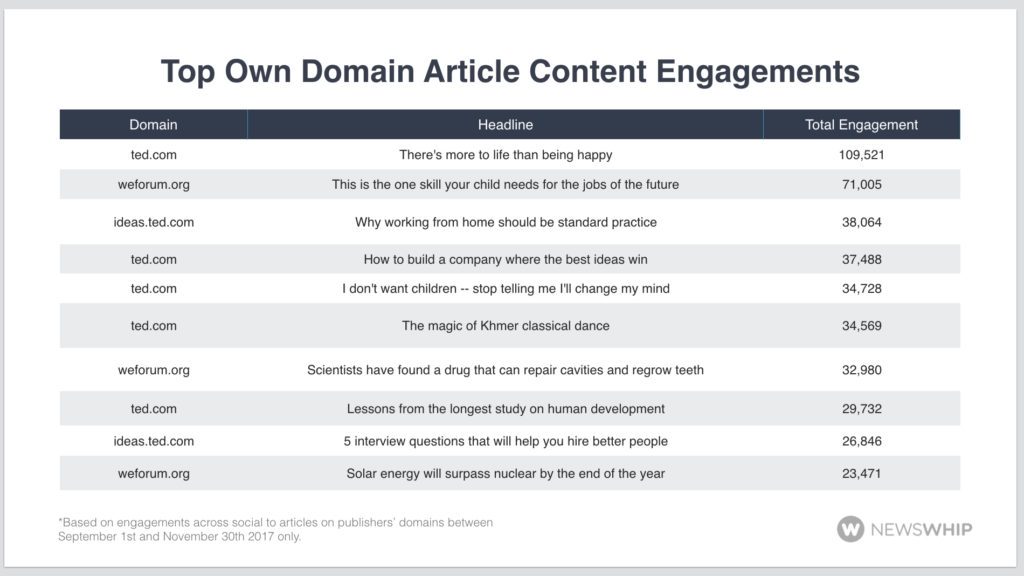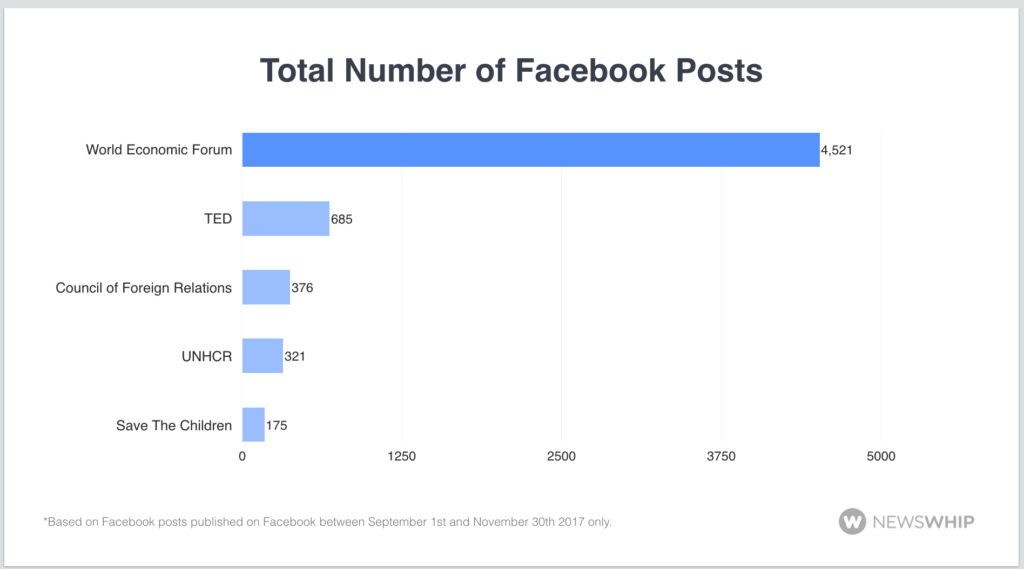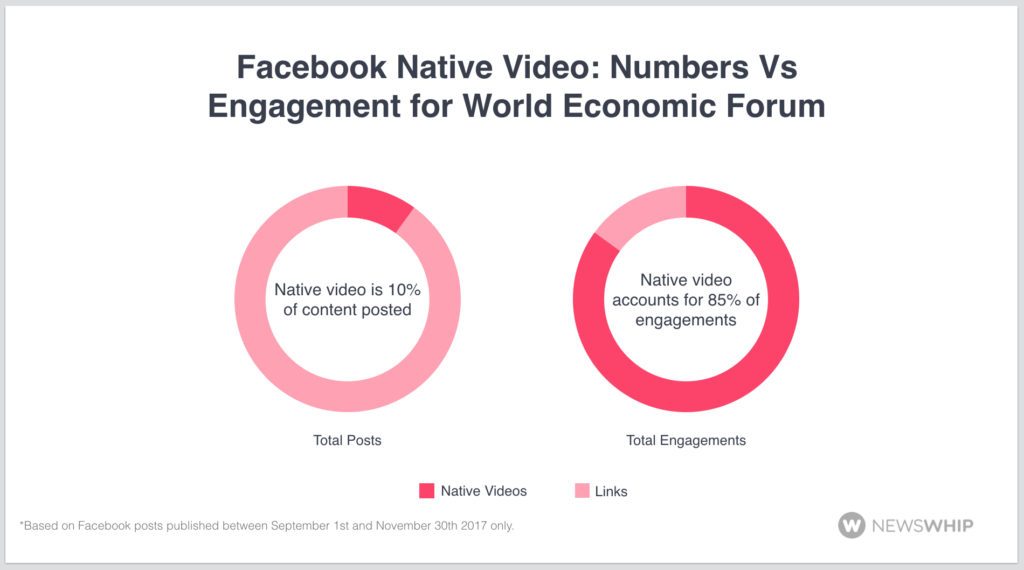Charities and nonprofits compete for our attention on social with companies that have many times their purchasing power. We take a look at who is doing it well, and how.
It’s not just brands and publishers that are competing for our ever diminishing attentions pans on social media.
Charities and nonprofits are also vying for the same audience’s eyes, despite their different way of working.
As such, we decided to look at what these charities and nonprofits, including some of the big UN foundations, are doing to maintain their social presence and win on social.
To do this, we’ll be looking at various aspects social performance, from earned media to owned media and social content, across several of the world’s largest and most ubiquitous charities and nonprofit organizations.
Earned media for charities and nonprofits
For our purposes here, we are defining earned media as articles written about the nonprofit. In terms of content written about these charities, the most covered in the press were TED, UNESCO, and UNICEF.
TED, the nonprofit whose mission statement is to spread ideas through series of short talks, had the most engagements on articles written about it in the three month period from September 1st – November 30th 2017, with over five million.
UNESCO and UNICEF, two UN charitable organizations devoted to the cultural preservation and helping children respectively, were the next two most engaged in terms of earned media, and the only organizations other than TED to garner over one million engagements on content written about them.
Stories tended to have a somewhat pessimistic focus, with themes of the top ten stories varying from the crisis in Yemen, to the potential economic problems caused by Brexit, to the Israel-Palestine conflict. This is perhaps to be expected in content written about charities, who after all exist to try to solve some of these problems.

The most engaged article is also perhaps the most controversial though, and ensured that George Soros’ charity Open Society Foundations had the highest average engagements because of one hugely viral article from yournewswire.com, a site that has been identified as providing hyper-partisan news coverage often lacking in accuracy.
The article concerned the foundation being banned from operating in Austria by its young leader Sebastian Kurz, a story that is completely untrue according to PolitiFact.
Despite only having 92 articles written about it, this one viral article garnering over 200,000 engagements put it firmly in the top five for total engagements.
Even beyond this one article, most of the articles about Open Society Foundations were little more than veiled attacks on George Soros more broadly, so any results around the engagements Open Society Foundations garner in earned media need to be taken with a fairly large helping of salt.
More generally, the publishers that wrote about these nonprofits that garnered the most engagements were the Independent, The Hill and CNN. The Independent drove the most engagements on its nonprofit-related content with nearly 300,000 for the period.
The Independent had the most engaged story outside the demonstrably false Soros story with its coverage of the crisis in Yemen, which cited Save The Children research.

Owned Media
It was a slightly different picture for owned media in terms of who was the most read, though TED was still the most ubiquitous. The World Economic Forum and Ted were two of the most engaged publishers on their own domains in the nonprofit field.
The World Economic Forum received the most engagements with 1.6 million engagements, and TED was close behind with 1.4 million, almost exclusively on links to videos of its talks.
These two websites dominated the top content for domain articles to such an extent that they were the only two domains that featured in the top ten articles for own domain content, with TED or its specific TED Ideas page featuring seven times, and the World Economic forum featuring thrice.

There was a lot of thematic unity with what content was successful, with big, sweeping ideas and innovations dominating engagements across the board. TED speaks for itself in this regard, but the World Economic Forum posts that were highly engaged could easily be the subjects of TED talks themselves.
Beyond these big two, the Council of Foreign Relations were the next biggest in terms of engagements to own domain content, and were the only other organization to break six figures for the period by this metric, garnering 100,235 for these three months.
Facebook Pages
For Facebook pages, there were two dynamics at play. TED, unsurprisingly, had the highest number of followers, with 10 million, and as a result drove the highest number of average engagements, at 5,787 per post with their well-defined brand of an informational video.
Can Animals Understand Unfairness?
Watch what happens when two monkeys are offered unequal pay for the same task, and other lessons in animal morality: http://t.ted.com/B6f8XJQ
Posted by TED on Thursday, 30 November 2017
TED did not, however, have the highest number of total engagements, as that honor belonged to the World Economic Forum. This was driven mostly by the sheer amount of content they posted, with 4,521 posts over the three month period (or 50 per day).

This was over 6x higher than TED, and helped them to their total of 11.7 million engagements for the period, compared to TED’s 3.9 million.
Both TED and the World Economic Forum had immense success with video, with it comprising roughly 10 percent of each of their Facebook posts, but being responsible for 65 percent and 85 percent of their respective engagements on the platform.

Conclusion
There are multiple ways to get attention on social as a charity or nonprofit. Here are just a few of them:
- Be an authority. If you or the studies you do can be a cited authority in earned media, this will help make people aware of the work you do as a charity.
- Define your voice and stick to it. TED has a very defined voice for its videos, which keeps people coming back to its content.
- Post frequently. The World Economic Forum posted fifty times a day on Facebook, which resulted in over 11 million engagements. If you have the content to post frequently, do so.
- Use video to your advantage. Video vastly over-performed for the two biggest nonprofit pages we looked at on Facebook. If you can take advantage of this trend with well-produced, informative video, it’s worthwhile.
Source: Newswhip




